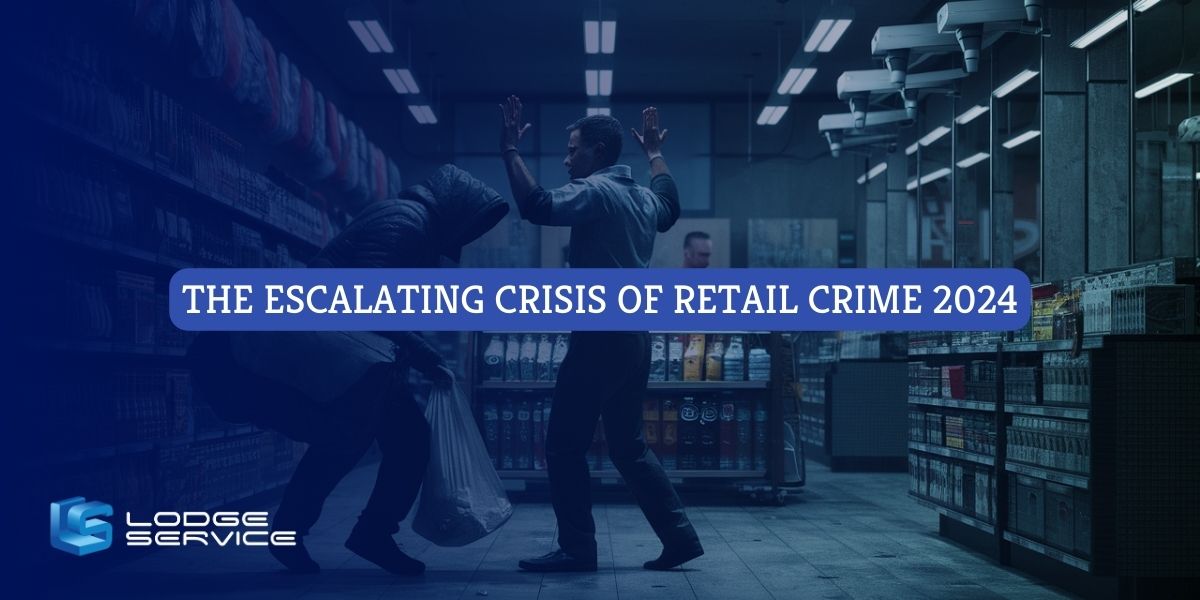The retail industry in the UK is facing a crisis of unprecedented proportions, with crime rates reaching alarming levels. Both the British Retail Consortium’s (BRC) 2024 Crime Survey and the Association of Convenience Stores’ (ACS) 2024 Crime Report paint a stark picture of the challenges faced by retailers across the country, highlighting the urgent need for comprehensive action.
Violence and Abuse: An Unacceptable Reality for Retail Workers:
Both reports reveal a deeply disturbing surge in violence and abuse directed at retail workers. The BRC survey identifies over 1,300 incidents daily, totaling a staggering 475,000 instances annually, a threefold increase from pre-pandemic figures. Similarly, the ACS report reveals a shocking rise in violent incidents, with approximately 76,000 instances reported in the past year, compared to 41,000 in the previous year.
These statistics represent more than just numbers; they reflect the daily reality of retail workers who face intimidation, threats, and physical harm. The emotional and psychological toll of these experiences is significant, leading to anxiety, fear, and long-term trauma.
Shop Theft: A Financial and Social Burden:
Shoplifting has reached epidemic proportions, with losses to retailers reaching staggering figures. The BRC survey reports a doubling of losses from customer theft in the past year, reaching £1.8 billion, equivalent to nearly £5 million lost every single day. The ACS report further emphasizes the scale of the issue, revealing a record-breaking 5.6 million incidents of shop theft in the past year, a dramatic increase from the 1.1 million incidents reported in the previous year.
This surge in shoplifting not only impacts retailers financially but also contributes to a sense of insecurity and fear within communities. The prevalence of theft can deter customers from visiting certain areas, impacting local businesses and the overall well-being of communities.
Online Threats: The Expanding Landscape of Retail Crime:
Both reports acknowledge the growing threat of online theft and fraud within the retail sector. The BRC survey highlights a 53% increase in online theft among retailers, with online fraud losses more than tripling to £99.7 million. This emphasizes the evolving nature of retail crime and the need for comprehensive strategies that address both physical and digital threats.
Root Causes: Understanding the Drivers of Retail Crime:
The ACS report delves deeper into the root causes of retail crime, identifying key factors contributing to the problem:
- Drug and Alcohol Addiction: Substance abuse is a significant driver of shop theft, with individuals often resorting to theft to fund their addictions.
- Organised Crime: Organised criminal networks are increasingly involved in retail crime, exploiting vulnerabilities and coordinating large-scale theft operations.
- Opportunism: The perception of low risk and high reward can lead individuals to engage in opportunistic theft, particularly when faced with economic hardship or a lack of consequences.
- Cost of Living Crisis: The ongoing cost of living crisis is identified as a contributing factor to the rise in theft, as individuals struggle to afford basic necessities.
The Police Response: A Call for Improved Effectiveness and Collaboration:
Both reports highlight a significant decline in retailers’ confidence in the police response to retail crime. Retailers express frustration with slow response times, inadequate follow-up investigations, and a lack of effective deterrents. This lack of confidence can lead to underreporting of incidents, further hindering efforts to combat crime.
Industry Response: Investing in Crime Prevention:
Despite the challenges, the retail industry is actively investing in crime prevention measures. The ACS report indicates that retailers spent £339 million in the past year on security measures such as CCTV, security staff, intruder alarms, and internal communication systems. However, these efforts alone are insufficient to address the scale of the problem.
The Impact on Consumers: The ‘Crime Tax’:
The financial burden of retail crime ultimately impacts consumers. The ACS report estimates that the combined cost of crime and crime prevention measures results in a 10p ‘crime tax’ on every transaction in UK stores, up from 6p in the previous year. This hidden cost underscores the far-reaching consequences of retail crime and the need for a collective effort to address the issue.
Calls to Action: A Collaborative Approach to a Complex Problem:
Both the BRC and ACS reports advocate for a collaborative approach involving retailers, law enforcement agencies, policymakers, and community organizations. Key recommendations include:
- Legislative Action: Introducing a standalone offence for violence and abuse against retail workers to provide legal protection and deterrents.
- Increased Police Resources: Allocating additional resources to neighborhood policing and prioritizing responses to retail crime incidents.
- Improved Reporting Systems: Developing streamlined and user-friendly reporting systems to encourage greater reporting of incidents.
- Investment in Technology: Encouraging and supporting retailers in adopting advanced crime prevention technologies.
- Addressing Root Causes: Investing in initiatives to address underlying issues such as substance abuse, poverty, and organized crime.
- Collaboration and Partnerships: Fostering stronger partnerships between retailers and law enforcement to share information, coordinate responses, and develop effective strategies.
Conclusion: A Collective Responsibility to Protect Our Communities
The escalating crisis of retail crime demands immediate and decisive action. Protecting retail workers, safeguarding businesses, and ensuring the safety and well-being of our communities is a shared responsibility. By working together, we can create a safer and more secure environment for all, ensuring that retail remains a thriving and positive force in our society.

